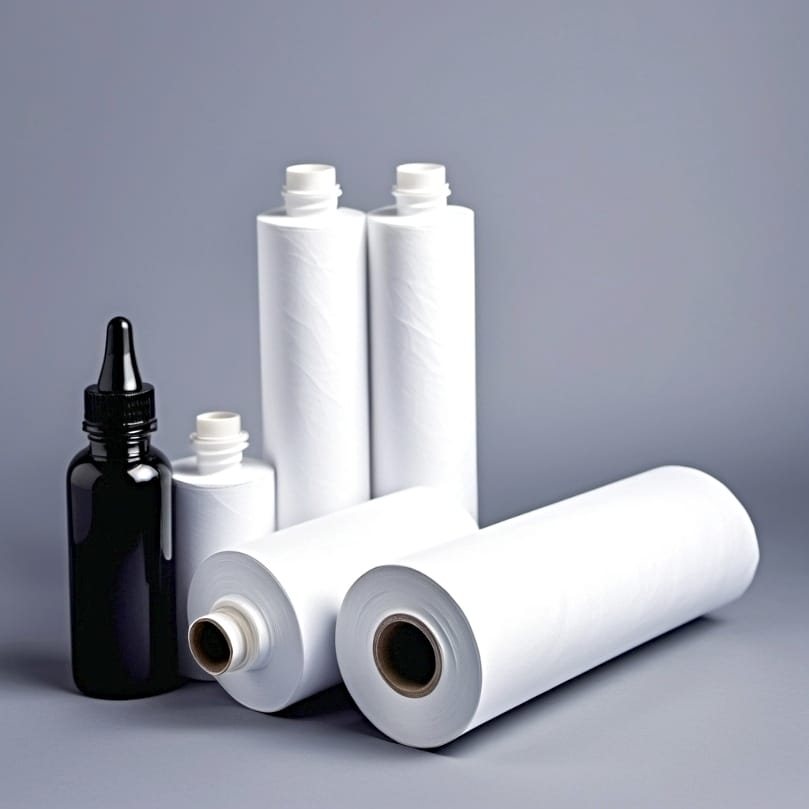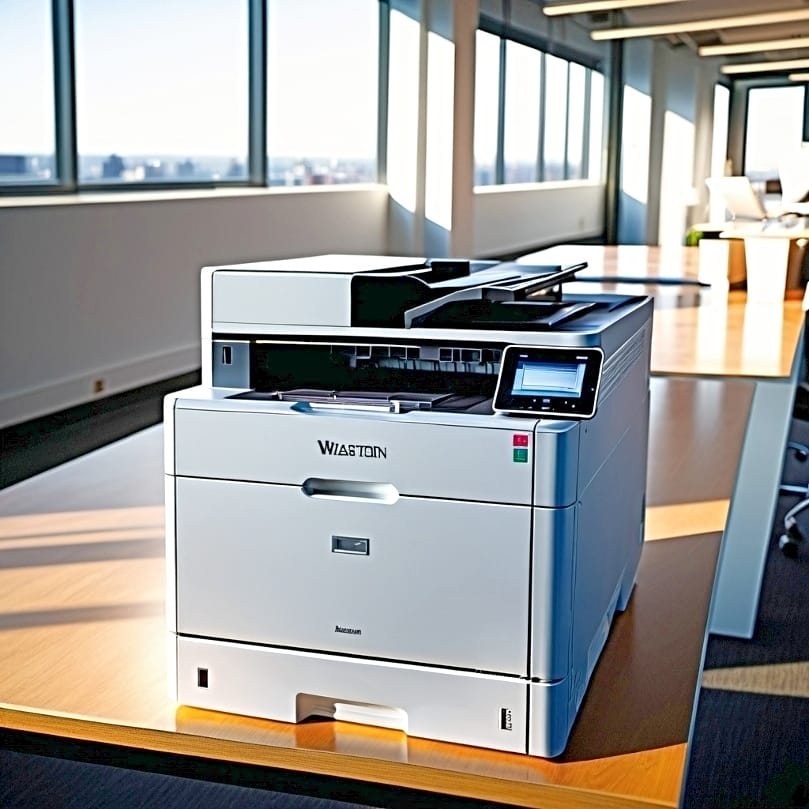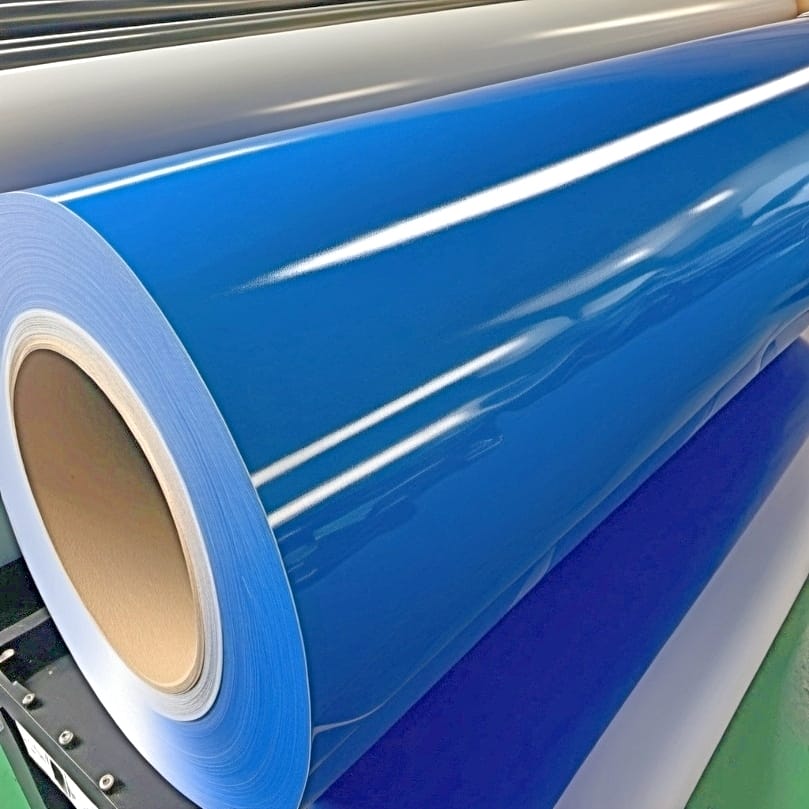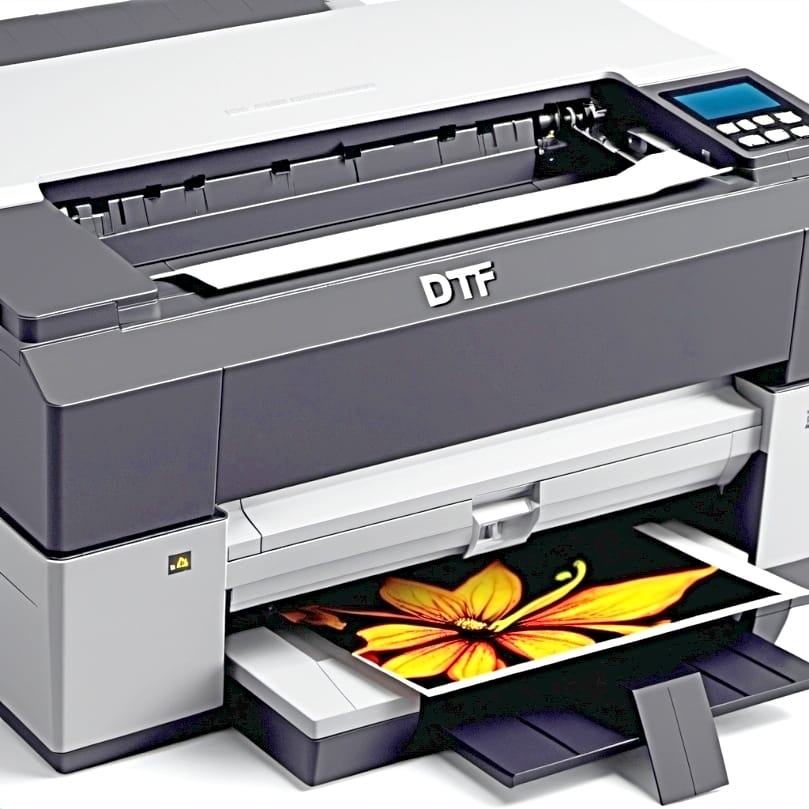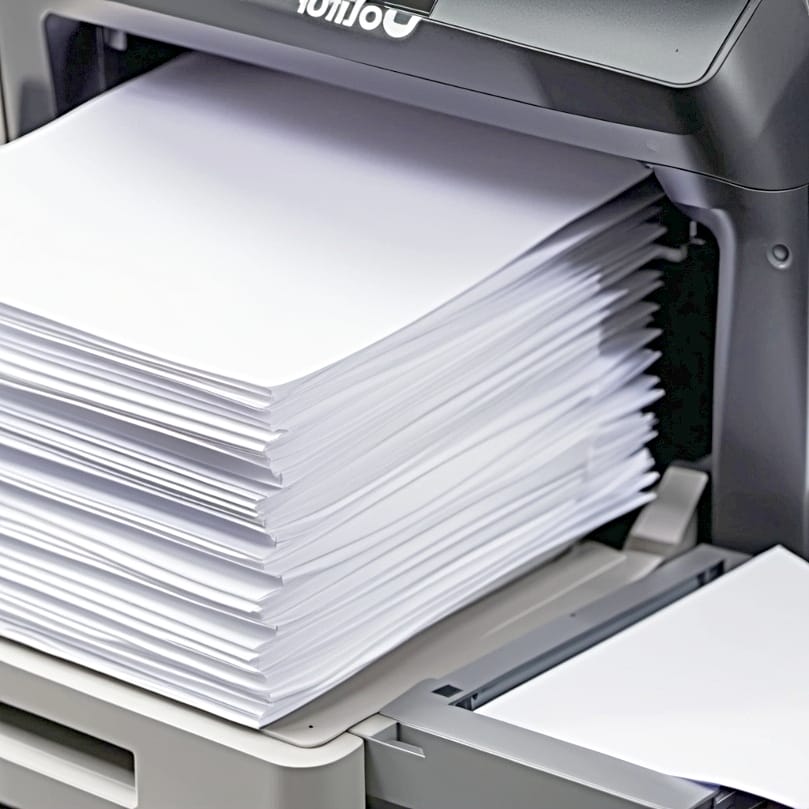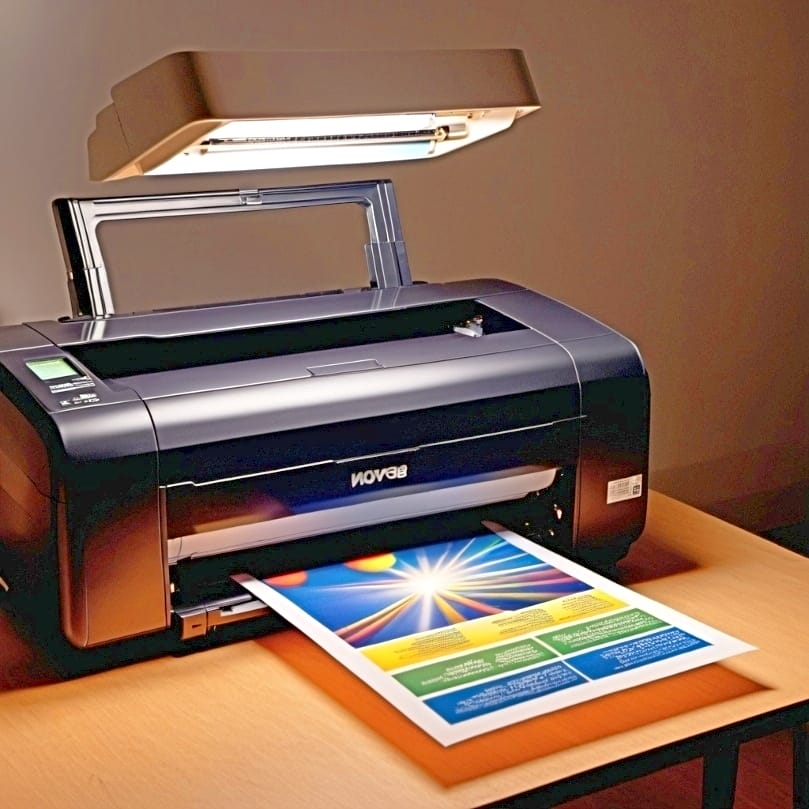Table of Contents
ToggleWelcome to the world of sublimation and heat transfer! Know that when it comes to customizing fabrics and garments, choosing the right printing method is crucial. In the debate of heat transfer paper vs sublimation paper, the core difference lies in their application and result: heat transfer paper provides versatility across a range of fabrics and colors, while sublimation offers unmatched durability and vibrancy but requires polyester-based materials. This article will guide you through the essentials of both methods, delve into their unique advantages and limitations, and enable you to make an informed choice for your specific needs. Whatever you decide, we wish you a happy journey ahead!
Key Takeaways
- Heat transfer paper offers printing versatility across various fabric types including cotton, polyester, and blends using standard home printers, whereas sublimation paper requires a higher initial investment and can only be used on polyester-based or poly-coated materials.
- Sublimation printing delivers more durable and vibrant designs that become part of the fabric, whereas heat transfer paper designs are more prone to wear but can still last with proper care.
- Both heat transfer and sublimation printing allow for application on various substrates beyond textiles, but heat transfer is more versatile (e.g., wood, leather) while sublimation requires a polymer coating.
Decoding the Basics: Heat Transfer Paper and Sublimation Paper

Heat transfer paper is the key to transferring an image from paper to fabric. This specialty paper transfers printed designs to garments when heat is applied, making it an accessible and versatile printing option. It works with most standard home inkjet or laser printers, including laser heat transfer paper and laser transfer papers, reducing the initial investment required to start printing. Moreover, inkjet heat transfer paper is compatible with a wide range of fabrics from cotton to polyester and even cotton-poly blends, making it a versatile solution for garment decoration.
On another note, sublimation printing is also a popular choice. This technique involves a design printed on sublimation paper becoming part of the fabric itself when transferred using a heat press. This process results in vibrant and long-lasting prints on polyester-based or poly-coated materials. While the initial investment for sublimation printing may be higher, the results are often worth it, with designs that are stunningly vibrant and impressively durable.
The Role of Heat Transfer Paper in Garment Printing
Heat transfer printing is a process where a design is printed onto specially coated paper and then transferred to a garment using a heat press machine that applies heat and pressure. This process can be performed using either a laser or inkjet printer, offering flexibility based on your available resources.
The flexibility of heat transfer paper in garment printing is significant. It can be used on a variety of fabrics such as cotton, polyester, and blended materials, making it a versatile option for garment printing. Notably, heat transfer printing can accommodate a wide range of designs, including graphics, text, and even high-resolution photographs.
For light-colored heat transfer paper, images must be mirrored before printing, while dark-colored heat transfer paper does not require this. Moreover, when using heat transfer paper on cotton items, a special coating is necessary to ensure the durability of the print.
Surely, heat transfer paper has its nuances, but its versatility and accessibility make it a popular choice in the world of garment printing.
How Sublimation Paper Transforms Designs
While the sublimation process is slightly more complex than heat transfer, it yields impressive results. The process of transferring a design from sublimation paper, printed with sublimation ink, to a substrate involves the following steps:
- Apply heat to turn the ink into a gas.
- The gas then penetrates the surface of the substrate, creating a vibrant and long-lasting print.
- This process is most effective on polyester-based or poly-coated materials.
Before being heat pressed onto the substrate, the ink on the sublimation paper dries quickly and the printed image is mirrored to ensure accurate design transfer. During the sublimation process, the solid ink bypasses the liquid phase and directly becomes a gas under heat and pressure, enabling it to permanently bind to the material.
This whole process contributes to the creation of designs that are not just prints on the material but become a part of the material itself, leading to an unbeatable durability and vibrancy.
Equipment Essentials for Heat Transfer and Sublimation Printing

Regardless of the chosen method, the heat press machine plays an integral role. This equipment is the heart of both heat transfer and sublimation printing processes, applying the necessary heat and pressure to transfer designs onto your desired material.
While professional-grade models can be a significant investment, costing at least $2,000, they offer longevity and capability for high-quality transfers.
Starting with Heat Transfer: What You Need
In heat transfer printing, the inkjet or laser printer is a vital tool. Inkjet and laser are the two main kinds of printers used for heat transfer paper, where inkjet printers are favored for their lower cost and capability to print full-color photographs. Meanwhile, the laser printer is ideal for vector-based designs and can also produce high-quality photo prints when used with RIP software.
Beyond the printer, there are specific types of heat transfer papers designed for different garment colors. Light heat transfer papers are best for white or light-colored garments, while dark heat transfer papers, which feature an opaque white polymer coating, are designed for dark-colored garments to prevent the shirt color from affecting the transferred design. The use of a heat press is recommended for achieving the best results, with light transfer papers necessitating the mirroring of images before printing and removal of the backing while hot after pressing.
Investing in Sublimation: Equipment and Costs

Setting up for sublimation printing, however, entails a significant initial investment in specific equipment such as a printer, ink, transfer paper, and a heat press. Moreover, you will also need a high-performance computer and specialized software to manage rigorous design work and printing tasks.
Despite the higher initial costs, the ongoing costs for sublimation printing are lower, presenting long-term cost benefits due to the durability and quality of sublimation inks and printers. For beginners, a cost-effective sublimation printing starter kit can be purchased, which generally includes:
- a sublimation printer
- paper
- design software
- a selection of sample products for experimentation.
Comparing Durability and Aesthetics: Transfer Papers vs. Sublimation Prints

When comparing heat transfer vs sublimation printing, each method has its own advantages and disadvantages when considering durability and aesthetics. Heat transfer paper designs are more susceptible to wear, driven by factors such as repeated washing and daily use, which can lead to the design cracking, fading, or peeling away from the fabric.
In contrast, sublimation employs a method where ink becomes part of the fabric, resulting in extremely durable and long-lasting designs that feel like part of the garment with no additional layer on top.
Longevity and Washability: Heat Pressed Designs vs. Sublimated Graphics
Sublimation printing offers several advantages:
- The design is infused into the fabric on a molecular level, making the print extraordinarily durable with no chance of peeling or cracking over time.
- Sublimated graphics maintain their quality and vibrancy even after numerous wash cycles.
- This makes sublimation printing suitable for items that require frequent laundering.
Although it might not be as durable, heat transfer paper still performs reasonably well. To maximize longevity, heat transferred designs should be cared for by washing the items inside out in cold water, aiding in preserving the design for around 50 washes or more with proper care.[1]
Although sublimation printing has a clear edge in durability, heat transfer printing is not far behind and can still produce long-lasting designs with the right care.
Visual Impact: Assessing Color Vibrancy and Detail
Sublimation printing stands out in terms of visual impact, as it can produce permanent, high-resolution, and full-color prints – a major advantage for photo quality and detailed work. While heat transfer paper may achieve photo-quality transfers with specific types such as inkjet for light garments or laser papers printed with white toner printers, it generally does not match the full color and resolution capability of sublimation.
The precision and detail handling of sublimation printing make it superior for intricate designs, thus offering better photo quality and color accuracy over heat transfer paper. However, recent technological advances like Polyfog and Reveal S transfer papers enable sublimation on cotton, though these modifications may not maintain the same level of print quality as standard sublimation on polyester fabrics.
Versatility in Fabric Choices: Which Method Wins?

The type of fabric you’re working with often dictates the appropriate printing method. Heat transfer paper has the capability to decorate a wide array of fabric types, such as:
- 100% cotton
- 100% polyester
- poly/cotton blends
- those with over 30% cotton
On the other hand, sublimation paper is restricted to decorating polyester fabrics and items that have a polymer coating.
Broadening Horizons with Heat Transfer Paper
The broad applicability of heat transfer paper makes it a favorite among many businesses and DIY enthusiasts. It opens up a world of possibilities, allowing you to print not only on textiles but also on hard substrates with flat surfaces. With diverse heat press configurations available to accommodate different applications, such as those tailored for hats, t-shirt fronts, or large-format items, heat transfer paper offers immense flexibility.
Moreover, for dark-colored cotton or cotton/poly blend fabrics, specific iron-on transfer papers have been developed to expand design possibilities. With heat transfer paper, you can brilliantly showcase your creativity on a wide range of materials and colors.
The Polyester Preference: Sublimation’s Fabric Limitations
Dye sublimation printing, on the other hand, has specific requirements. It is designed to carry sublimation ink onto substrates like polyester garments, making it particularly suited for polyester and polyester blend fabrics. The ink forms a permanent bond at the molecular level with polyester fibers, ensuring vibrant, long-lasting designs that become part of the fabric.
However, sublimation printing is limited to printing on white or very light-colored fabric to ensure clear design visibility and vibrancy. To enable sublimation printing on dark fabrics, a white heat transfer vinyl can be used as a base, providing a light-colored surface necessary for sublimation ink to show properly.
Despite these limitations, sublimation printing offers unmatched vibrancy and durability, making it a favorite for many businesses.
Streamlining Production: Weeding and Ease of Use

There is a significant variation in the production processes of heat transfer paper and sublimation printing. Heat transfer paper requires a weeding process, which involves removing excess material from around a design before transferring it onto a fabric or surface.
On the other hand, sublimation printing is naturally self-weeding, which simplifies and expedites the printing, pressing, and peeling processes.
The Weeding Process with Heat Transfer Paper
Heat transfer paper requires the following steps:
- Trim the design after printing and before pressing to ensure only the desired design transfers onto the fabric.
- Weed the design by removing any excess material around the design.
- When working with dark heat transfer paper, it’s important to prevent unprinted areas from transferring as white, making precise trimming imperative.
On the other hand, for light fabrics, leaving a small border during cutting is necessary to avoid a semi-transparent film being transferred, contrasting the trimming needs for dark fabrics. A plotter or vinyl cutter is invaluable in the heat transfer paper process for enhancing the detailing and accuracy of cuts, especially when weeding intricate designs.
Effortless Efficiency with Sublimation Printing
Compared to heat transfer paper, sublimation printing offers an effortless and efficient production process. This is largely due to its self-weeding nature, where the ink permeates the fabric without leaving residue, obviating the need for weeding and making the printing process less labor-intensive.
In fact, the sublimation printing process is streamlined due to its self-weeding nature, eliminating the need for additional preparation steps before pressing. This simplicity coupled with the high-quality, durable results makes sublimation printing a beloved choice for many businesses and hobbyists.
Specialty Applications: Beyond T-Shirts

Both heat transfer and sublimation printing originated in the textile industry, but their applications now go well beyond t-shirts. Sublimation and heat transfer printing using a heat press machine can transfer graphics onto a diverse array of substrates such as:
- wood[2]
- leather
- coated metals
- ceramics
- glass
- apparel
In contrast, sublimation printing requires substrates to have a polyester composition or a specialized polyester coating to properly bind with sublimation inks.
Creative Ventures with Heat Transfer Paper
The versatility of heat transfer paper means it’s not just limited to textiles but can also be applied to hard substrates with flat surfaces. This opens up a world of creative possibilities, allowing you to decorate a wide range of items from wood to ceramics to glass.
Moreover, there are diverse heat press configurations available to accommodate different applications, such as those tailored for hats, t-shirt fronts, or large-format items. The ability to apply heat transfer designs to hard surfaces adds another dimension to the already versatile heat transfer printing method.
Sublimation’s Niche: Polymer-Coated Surfaces

Sublimation printing can be applied to a variety of hard surfaces with a special poly-coating, including:
- Coasters
- Jewelry
- Mugs
- Puzzles
With the help of specialized equipment such as a mug press or mug oven, you can print on curved surfaces like mugs, expanding your product offerings.
Despite the need for a special coating, the durability of sublimated items has improved, with substrates offered by ChromaLuxe and Unisub now being sunlight-resistant for up to five years. Businesses looking to enhance their product lineup can definitely benefit from incorporating hard-surface sublimation products into their services.
Summary
In conclusion, both heat transfer paper and sublimation printing offer unique advantages that make them invaluable in the world of custom printing. The former is versatile and accessible, making it suitable for a wide range of applications and budgets. The latter, while requiring a higher initial investment, offers unmatched vibrancy and durability, making it a favorite for businesses that value quality over cost. Regardless of your choice, understanding these two printing methods will undoubtedly enhance your custom printing endeavors. Check out the Home Page of Colour Vistas to learn more on sublimation!
Frequently Asked Questions
What is the difference between heat transfer paper and sublimation paper?
Sublimation paper creates a design that becomes part of the fabric, resulting in a superior feel and durability, while heat transfer paper creates a layer on top that can crack or fade with washes.
Can I use transfer paper for sublimation?
Yes, you can use transfer paper for sublimation, but you’ll need the specific sublimation transfer paper, along with a sublimation printer, sublimation ink, and a heat press to transfer the image onto the garment. The sublimation paper can be used to transfer onto polyester, mouse pad, banners, mugs, ceramic, and aluminum plates.
Which is better sublimation or heat transfer vinyl?
Sublimation is better for long-lasting, full-color prints on polyester, while heat transfer vinyl is great for customizing cotton-based fabrics with a wide range of colors and finishes. It ultimately depends on your budget, volume of work, and personal preferences.
Can I use heat transfer paper on any type of fabric?
Yes, heat transfer paper can be used on various fabrics like cotton, polyester, and blends, but it should match the color of the fabric to work effectively.
What equipment do I need for sublimation printing?
To get started with sublimation printing, you will need a sublimation printer, sublimation ink, sublimation paper, a heat press, and specialized software on a high-performance computer. These are essential for the sublimation printing process.
References
- Chiu, A. (2023c, December 14). Why you should almost always wash your clothes on cold. Washington Post. https://www.washingtonpost.com/climate-solutions/2022/11/29/laundry-cold-water-environment/
- Wood | Properties, Production, Uses, & Facts. (1998, July 20). Encyclopedia Britannica. https://www.britannica.com/science/wood-plant-tissue/Properties-of-wood

